Origin of the Love Canal
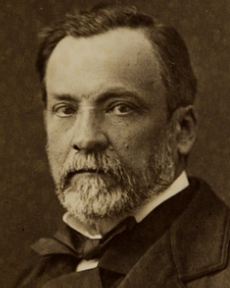
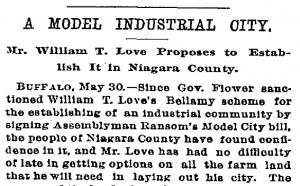
In the late 1890s, William T. Love, a railroad entrepreneur, purchased land along the Niagara River in western New York as a new investment project. He planned to build a canal in order to capitalize on the new waterways and factories that were interested in using the canal to generate hydroelectricity (William T. Love, 2015). Ideally, he envisioned creating a “model industrial city” with a growing economy tied to the canal. He created urban plans for parks, community centers, roads, and neighborhoods that would encompass the Love Canal. As the canal was being built, the population began to grow and the town of Love Canal slowly formed. However, in 1906, a few environmental lobbyists convinced Congress to pass a law that prohibited the diversion of water out of the Niagara River in order to preserve the beautiful falls. The canal only had about one mile built before the development was canceled. The empty canal was left incomplete and abandoned (Newman, 2016).
Ticking Time Bomb
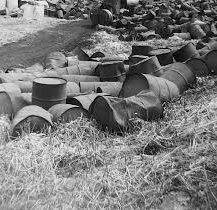
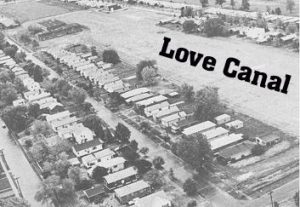
By 1920, the disaster began to unfold. The Canal was used as a waste site by the city of Niagara Falls. The city of Niagara Falls gave permission for Hooker Chemical Company to use the canal as a dumping site for their chemical waste. In 1947, the Hooker Chemical company purchased the canal and the 16-acres of surrounding land as a dumping site for chemicals and toxins. They drained “the canal and created open pits to store drum barrels of toxic chemicals” (The love Canal Tragedy, 2016). There is a proper way of disposing of chemicals. The Hooker Chemical Company’s methods are certainly not an example. These steel drums were not properly concealed and many barrels were left leaking. The Hooker Chemical Company did not manage or regulate the waste. Instead, they patched the Canal with earth and cement. Over time, grass began to cover the canal and it seemed completely inconspicuous. However, beneath the ground laid 21,800 tons of chemicals seeping into the ground, finding its way into schools and people’s homes. The city hired investigators to test the air and water quality to determine whether the chemicals are dangerous. They concluded that there were “toxic chemical residues in the air and sump pumps of many homes at the southern end of the canal” (Social Movements, n.d.).
The Unintended Outcome of Love Canal
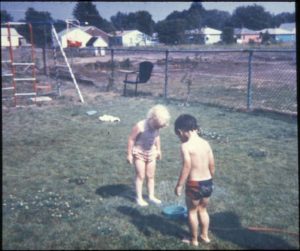

In 1953, the city of Love canal needed to build a new school in response to the growing population. The Hooker Chemical Company offered to sell the city the land back for $1.00. The city, of course, did not refuse the opportunity to purchase 16 acres of land for a single dollar. They soon began construction of the 99th Street Elementary School for hundreds of kids in the community to attend. While they were learning to count, they were also being contaminated by the 21,800 tons of chemicals beneath their feet. Many parents in the neighborhood began to recognize their children were falling ill. The chemicals began seeping into their basements and contaminating their gardens (Love Canal 2020). Residents reported foul, strong odors permeating their homes and their children would run inside with rashes on their bodies from playing in the sprinklers. The EPA conducted a test and found up to 88 different toxic chemicals; 11 of which were carcinogens. Many people were found to have a high white-blood-cell count, which is a precursor of leukemia (Love Canal Site Profile 2017). Also, the state government urged women and children to leave the area immediately since birth defects and miscarriages rose among women. Children were born with defects such as a cleft palate, vision impairments, an extra row of teeth, and mentally handicapped.
Community Coalition
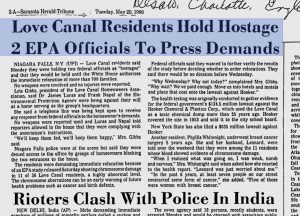

The town of Love Canal consisted of working-class residents who were not able to leave their homes and simply move elsewhere. Instead, they joined forced and formed the Love Canal Home Owners Association: spearheaded by Lois Gibbs. Over 800 families joined the LCHA and stopped at nothing to gain the media attention. They even held EPA officials that were conducting studies in the area hostage. The EPA officials survived, and the LCHA thrived! They garnered enough media attention that the president at the time, Jimmy Carter, was aware of the Love Canal Tragedy. It was almost as if the country was looking at him to observe his next move. The pressure of the public, the media, and reelection resulted in the approval to purchase the homes of the families of the LCHA so they are able to relocate. The 99th Street School, which should have never been built, was finally demolished (Smith, 2020).
Love Canal Today


In response to Love Canal, the EPA allocated money to a superfund dedicated to chemical toxin clean up of nearly 400 other toxic sites around the country. Also, they passed legislation that holds the responsible parties at fault for chemical contamination accountable. Love Canal was too costly to completely clean up so the 21,800 tons of chemicals were just contained rather than cleaned. In the early 1990s, the empty homes in Love Canal were being sold for below market price. The government declared the homes were safe to repopulate, even though the chemicals remained in the area. In fact, a construction project in 2010 unearthed a damaged pipe oozing chemicals (Germain, 1993). To this day, residents of Love Canal who suffer from health risks believe their illnesses can be traced to the 21,800 tons of chemicals lingering in their neighborhood. The EPA has installed hundreds of monitoring wells to track any leaking chemicals, and they conduct studies every five years to track correlations between the chemicals and health risks (Thompson, 2018). It is not hard to believe that the chemicals are the reason people in the community are still getting sick at alarmingly high rates.